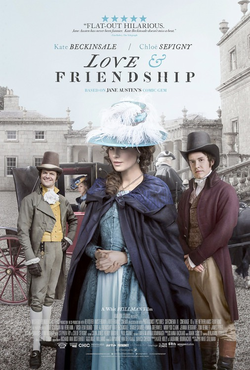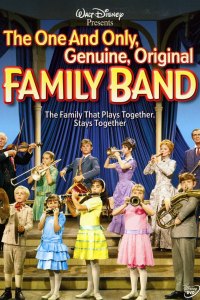Chances are, unless you were paying attention, you’ve missed the best movies that were released this summer. Chances are, big summer blockbusters like Star Trek and Suicide Squad overshadowed all of the scrumptious Sundance releases and independent films that came to theaters.
The good news is, most of these films are now available on Redox or VOD.
Here’s part one of my list of summer films you may have missed:
_poster.jpg) Midnight Special
Midnight Special
Jeff Nichols, who brought us Mud, writes and directs this tight-lipped sciene fiction beauty. I say tight lipped– the film is quiet, with hardly an unnecessary word and no spoken exposition. The film follows a father as he tries to get his son– who possesses magical powers– to the place the son saw in one of his visions… all while they are pursued by both government agencies and religious extremists who want to take the boy. The film, while fantastical in concept, really comes down to the relationship between a child and his parents. It features wonderfully subtle nighttime cinematography by Adam Stone, and absolutely phenomenal performances by Michael Shannon, Joel Edgerton, Kirsten Dunst, Adam Driver… and the brilliant young Jaeden Lieberher.
 The Lobster
The Lobster
From the get-go, the concept of this film clues you into how original this film is: In this world, marriage is mandatory by law, and any adult who is single gets shipped off to a resort where they must find love, or be turned into an animal (of their choice). The film’s deadpan delivery, hilarious absurdism, and disturbing nature make it deliciously uncomfortable in tone– you never know when to laugh or cringe. The film also makes a scathing critique of how society’s determine how we treat love and relationships… a point that is poignantly hit in the haunting conclusion. Written and directed by Yorgos Lanthimos, and starring Colin Farrell and Rachel Weisz.

Sing Street
Writer-director John Carney (Once, Begin Again), again hits it out of the park. Set in 1985 Dublin, 15-year-old Conor gets sent to a tyrannically-run Catholic school when his parents hit financial trouble. There, despite bullying and an abusive headmaster, he decides to start a futuristic rock band in order to impress a girl. Taking inspiration from bands like Duran Duran, The Clash, and The Cure, Conor uses his music to help him navigate the complicated aspects of life he’s experiencing. It’s a coming of age film, and hits all the necessary points for that kind of story, but does so in a way that is sincere, touching, and genuinely hilarious– mostly due to Carney’s use of inexperienced actors and almost documentary-esque filming and writing. The film is dedicated “to brothers everywhere”… and comes down to that very special relationship between siblings.
 Love & Friendship
Love & Friendship
Written and directed by Whit Stillman, this film is based on an obscure Jane Austen novella and follows the scheming of one Lady Vernon as she tries to secure the proper relationships that will make her rich and comfortable. Stillman pushes the comedy, which is upheld by hilarious performances by Kate Beckinsale, Chloe Sevigny, and the film’s comic star Tom Bennett. This is the film for all those who perhaps prefer Austen’s satire and humor over her romance.
 High Rise
High Rise
Based on a classic British sci-fi novel by J.G. Ballard, High Rise is, in essence, a modern retelling of the fall of Rome. Robert Laing, a neurosurgeon, moves into a fancy high-rise building on the outskirts of London. The building promises a new kind of life– one of complete luxury and convenience. The building is quickly divided by class– the rich in the upper levels and the poor in the lower levels. Soon the residents become dependent on the life the building offers… and spend their days in horrifically disgusting excess– parties, drugs, sex. But when electricity becomes scarce and the building stops functioning, the residents turn on each other and their society plunges into a chaos ruled by animal instincts. The film responds to the story with increasingly surreal editing and bizarre imagery, all harnessed in with 1970s design (when the novel was published) and a bit of a b-movie aesthetic. Written by Amy Jump, directed by Ben Wheatley, and starring Tom Hiddleston, Luke Evans, Jeremy Irons, Elizabeth Moss, and Sienna Miller. **Content Warning: this film is not for the faint-of-heart, and is most definitely a hard-R. Just don’t blame me for your nightmares, thanks.**
 Cafe Society
Cafe Society
This is a Woody Allen film for those who like Woody Allen films– is there much more to say? It features a star-studded cast and Vittorio Storer’s sumptuous cinematography– as well as a familiar story set in the 1940s about a neurotic young man navigating relationships. Jesse Eisenberg is one of my favorite stand-ins for Allen’s typical character, and the film is tinged with that bit of melancholy and regret that has been an undercurrent in Allen’s more recent films. Also worth noting– Kristen Stewart, who is quickly becoming a favorite actress of mine as she takes on more subtle roles (watch her in Certain Women this fall and you’ll see what I mean).
 Hunt for the Wilderpeople
Hunt for the Wilderpeople
Taika Waititi’s film Hunt for the Wilderpeople is an utter delight, start to finish. “Bad Egg” Ricky Baker, a 13-year-old tossed through dozens of homes in New Zealand’s foster system– gets adopted by farmers Bella and Hec and moves to the middle of nowhere on the outskirts of the bush. And it’s a perfect fit. However, tragedy soon strikes and child services declare that they are taking Ricky away from his newfound home. What follows is a fantastic chase as Ricky and Hec go off into to bush to escape the threat of separation. The film’s quick-cut editing, aerial photography and quirky dialogue reinforces the playful aspect of the film’s tone and counters any possible over-sentimentality. Additionally, the film’s electronic soundtrack by Moniker brings is reminiscent of an 80s fantasy film, again elevating the film from something familiar into something extraordinary. It’s sincere, unique, and hilarious.






 On the side I’d recommend another light & sweet addition– Wes Anderson’s Moonrise Kingdom (2012). It features an all-star cast and Anderson’s typical cheery, quirky design, but is perhaps a little more mild in terms of content and so wouldn’t put off an Anderson Newbie. The story focuses on Sam & Suzy, two 12 year olds who have been deemed “troubled” by the adults and run away to the outskirts of their New England island to create their own paradise called Moonrise Kingdom. The film speaks to the innocence and purity of first love and is full great 1960s design and music. Not to mention all of the great deadpan humor–Edward Norton’s scout troop leader is one of my favorite Wes Anderson characters.
On the side I’d recommend another light & sweet addition– Wes Anderson’s Moonrise Kingdom (2012). It features an all-star cast and Anderson’s typical cheery, quirky design, but is perhaps a little more mild in terms of content and so wouldn’t put off an Anderson Newbie. The story focuses on Sam & Suzy, two 12 year olds who have been deemed “troubled” by the adults and run away to the outskirts of their New England island to create their own paradise called Moonrise Kingdom. The film speaks to the innocence and purity of first love and is full great 1960s design and music. Not to mention all of the great deadpan humor–Edward Norton’s scout troop leader is one of my favorite Wes Anderson characters.











